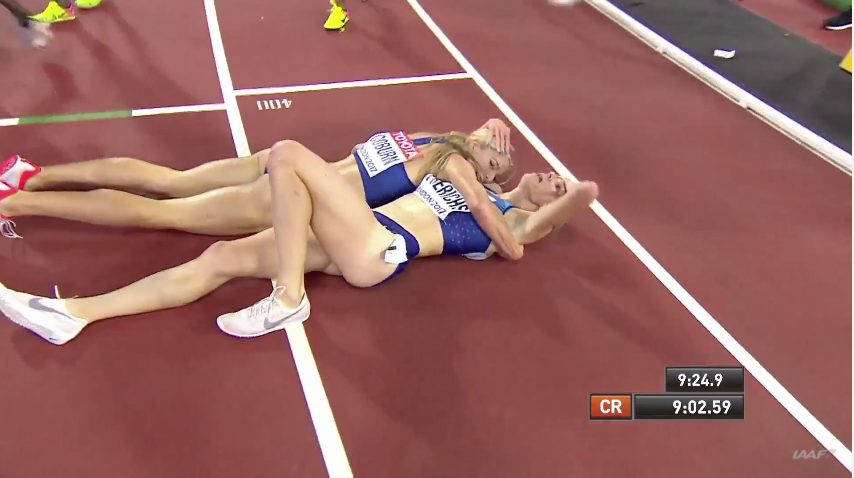Emma Coburn rocks the water barrier, and other gems from IAAF biomechanics study
Largest-ever study of athletes' biomechanics during competition contains fascinating nuggets


American steeplechasers Emma Coburn and Courtney Frerichs clear the water barrier better than other athletes. Dutch sprinter Dafne Schippers had the longest stride length during acceleration (2.3m) of anyone in the 100m final. And Ethiopian 10,000m champion Almaz Ayana strides 20 cm longer on her right side than her left.
Time for a stat from the London 2017 biomechanical report:https://t.co/39IVE4pX30?
Did you know: Women’s 10000m champion Almaz Ayana has a 20cm difference between the length of her strides from right to left, but men’s 10000m champion @Mo_Farah has a difference of just 6cm?? pic.twitter.com/pbdhrAryuz
— World Athletics (@WorldAthletics) July 18, 2018
These are just a few of the nuggets from the recently-released IAAF biomechanics study from the 2017 World Championships in London. The Carnegie School of Sport at Leeds Beckett University in Leeds, U.K. has produced 38 in-depth reports for the IAAF, after a year spent analyzing the data from 49 high-speed, high-definition cameras at the games. The data will be invaluable for athletes, coaches and medical professionals.
Some other interesting facts from the study: relays are won by minimizing the time spent in the changeover zone. (The British men’s 4×100 team won by 0.05 seconds, which is exactly how much less time they spent in the changeover zone than the silver-winning U.S. team.)
RELATED: No medals for Canada at 2017 IAAF World Championships
And one of the best hurdlers in the world (bronze medallist Balazs Baji of Hungary in the 110m hurdles) had the longest stride length going over the hurdles (four metres) of anyone in the competition.
It's time for another stat fact from @London2017??
Did you know that @emmajcoburn of the ?? had the longest water jump clearance in the women's 3000m steeplechase? – Equivalent to the size of a dolphin ?
More on biomechanics in athletics:https://t.co/39IVE4pX30?? pic.twitter.com/QJT3yanU2B
— World Athletics (@WorldAthletics) July 18, 2018
The study was released at the IAAF Coaches Conference in Tampere, Finland on Sunday, which was also the final day of the World Junior Championships.
RELATED: Canada sets new U20 record in 4x400m final at World Junior Championships


